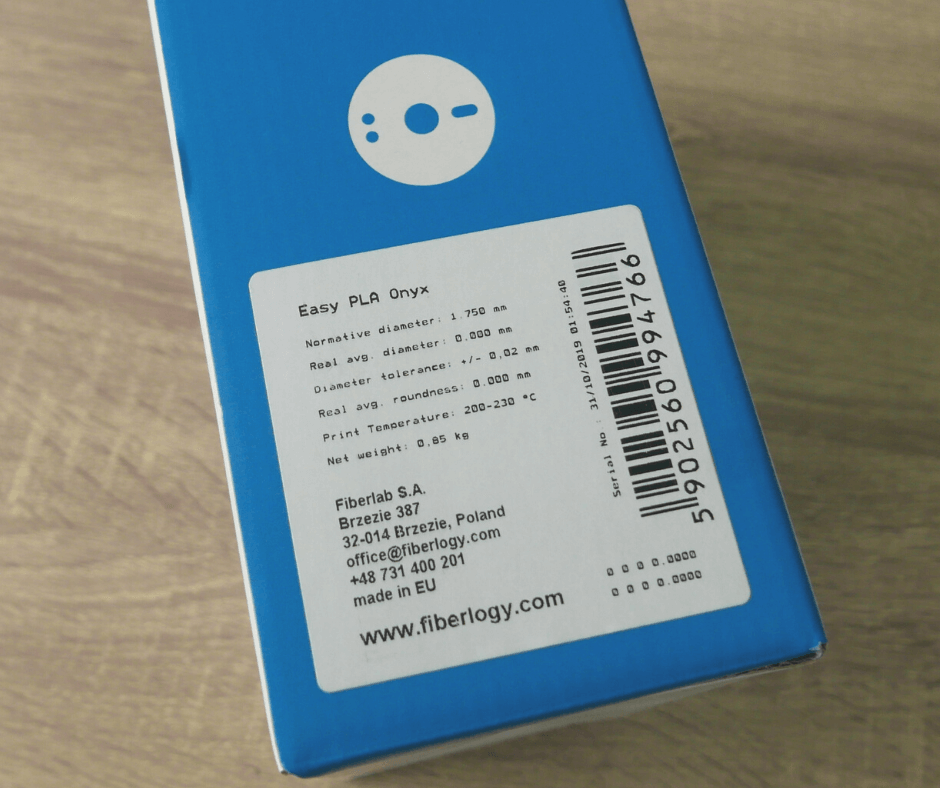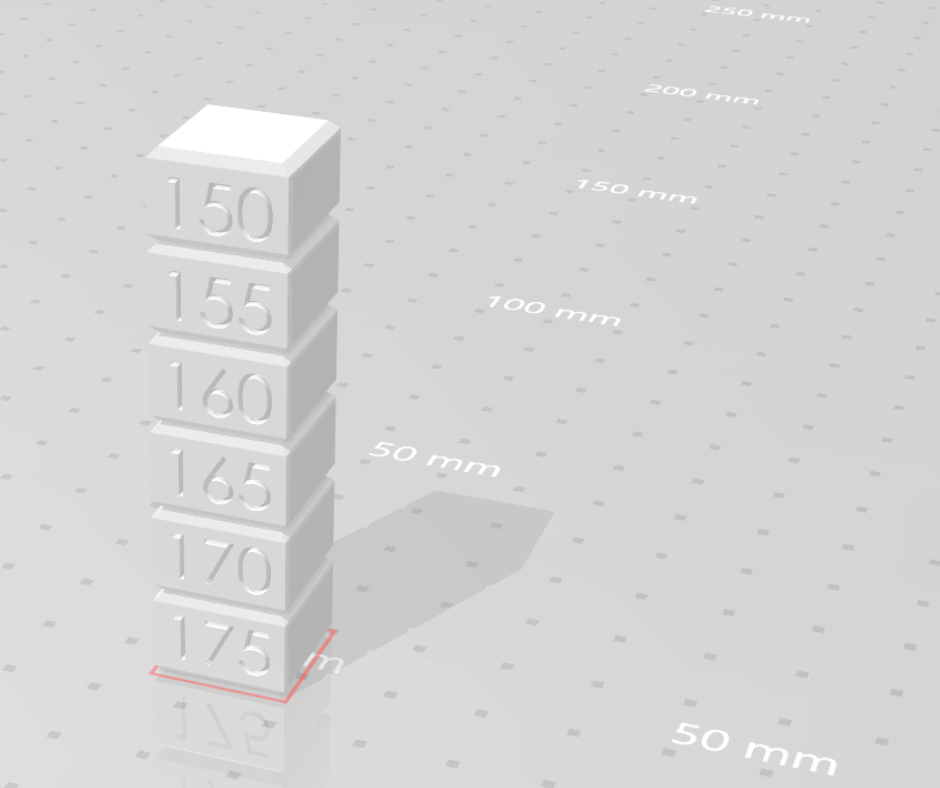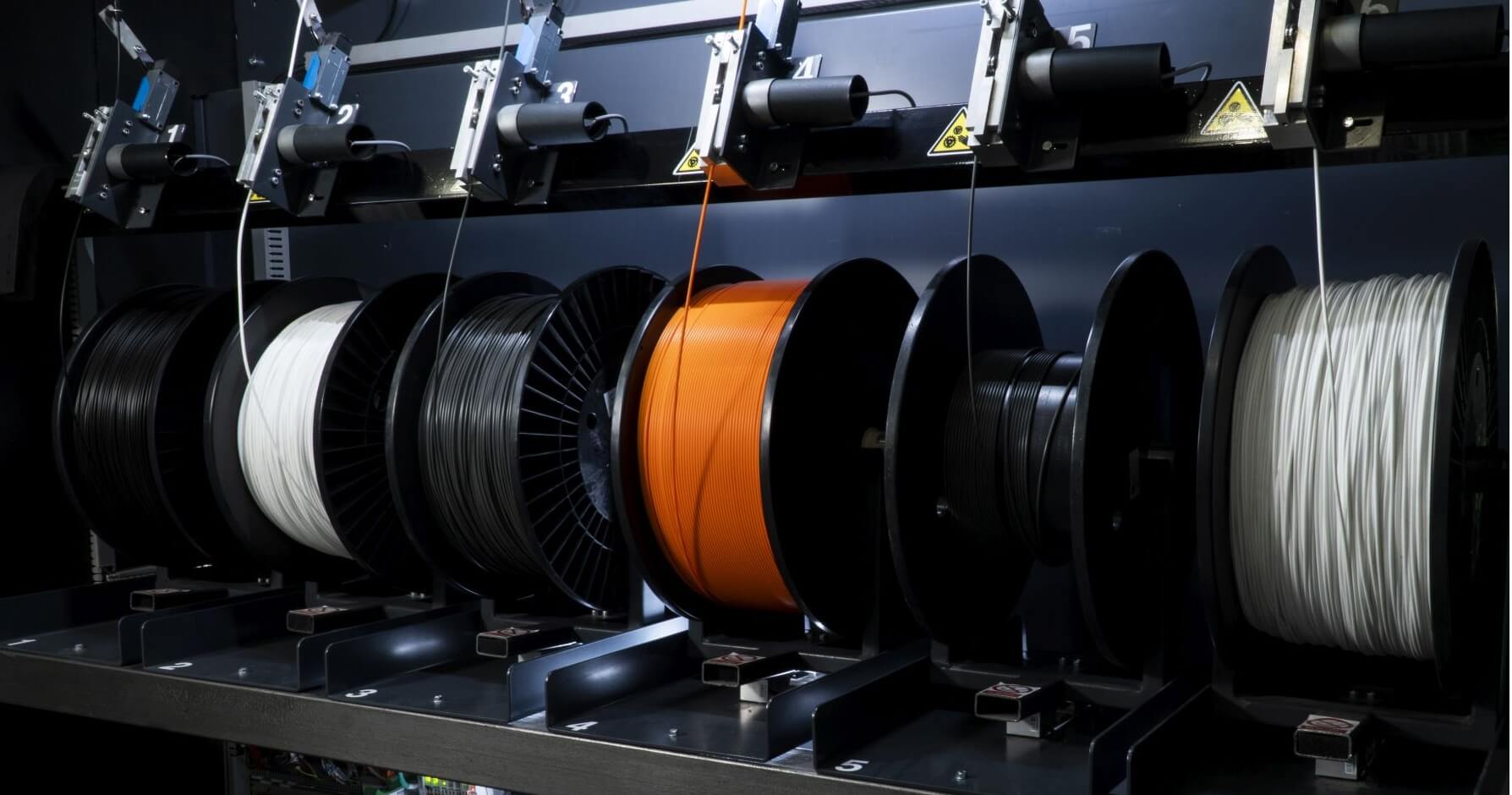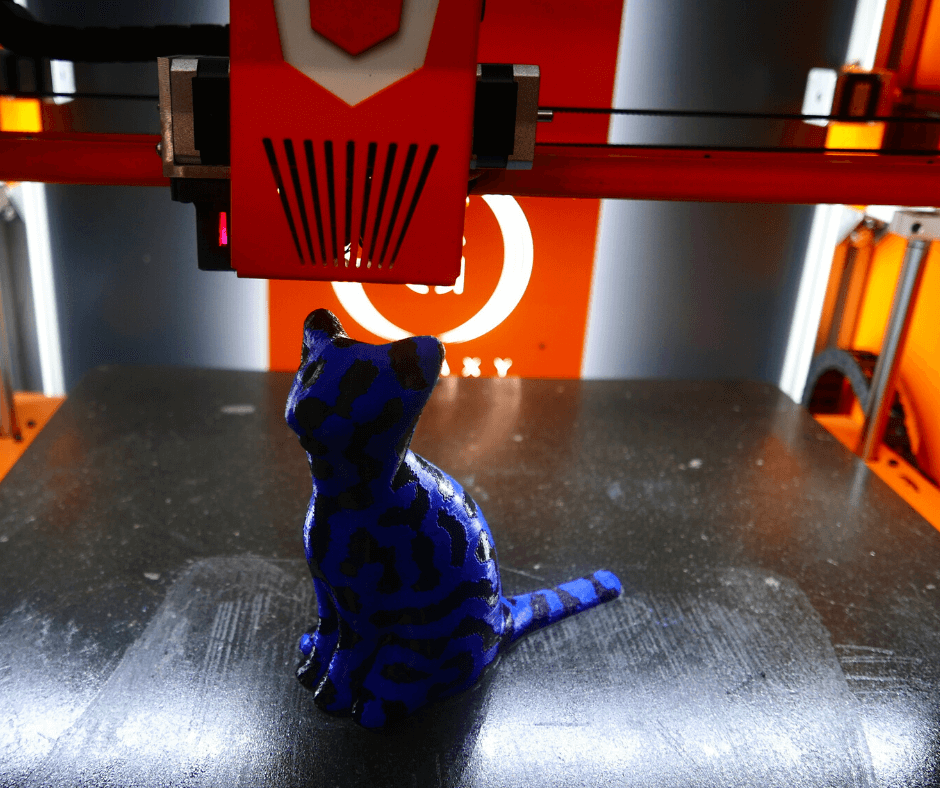Do you start working with 3D printers? You probably have more questions than answers. A well-chosen device model that meets your needs and expectations is only half a success. The other half is the choice of a filament that best suits your skills and the purpose of the print.
We have answered the questions that are most often asked by people implementing the specificity of 3D printing and have collected them in the form of a short article, which we hope will solve many doubts.
We read the labels on the filaments
Let's start with the most basic issue, i.e. correct reading of the labels placed on the filament packages. We'll find basic information about the appearance, strength, or flexibility of the material and the print temperature range.
 Photo: Example label of EASY PLA filament from Fiberlogy
Photo: Example label of EASY PLA filament from Fiberlogy
Before you start the printing process, it is important to choose the right temperature. To compare the print quality for each temperature, you should first print the template for the entire temperature range specified by the manufacturer and then determine the best print temperature.
The table temperature and print speed information on the filament labels will be particularly important when working with more demanding materials such as nylon, TPU, or PVA.
Incorrectly selected parameters could cause cracking or deformation of the models.
 Photo: Example of the test model
Photo: Example of the test model
At the beginning of work with new material, please refer to the TDS (Technical Data Sheets) and SDS (Safety Data Sheets), which contain all the manufacturer's recommendations for the use of additional indirect, direct protection measures during printing, but also the technical data for the respective filament. After reading the above, it is recommended to make test print-outs to select appropriate parameters adjusted to the printer specifications.
Dominik Zych, 3D ATMAT Technologist
Which filament to start with?
We recommend PLA to all beginners. It's one of the most popular FFF filaments -it's not very demanding, has a low melting point, is not very shrinkabl, and has a relatively low price. PLA is an ideal material for simple yet visually attractive prints, such as figurines or toys.
After you get familiar with the PLA, it is best to proceed to the printout from the PET-G filament, which is characterized by a small shrinkage of the material and good adhesion of layers. When printing with PET-G, we learn to work with a heated printer table, which will be useful when introducing the next filament, which is ABS.
ABS filament is more demanding than PLA or PET-G due to high shrinkage and the need to use a heated work table and closed working space. This is a fickle filament -it often happens that prints are torn off the table or that subsequent layers are torn apart. When working with ABS, we must be prepared for the release of unpleasant and dangerous fumes, so we work with it only in rooms with adequate ventilation.
Nylon, TPU, PA, ASA, and other demanding filaments we leave to the end - they require special printers and more practice.
 Photo: Filament reels in a large-scale Jupiter 3D printer
Photo: Filament reels in a large-scale Jupiter 3D printer
Bonding different filaments - how to do that?
First, to print from two different filaments, we need to have a two-headed printer, e.g. ATMAT SIGNAL PRO or ATMAT GALAXY. Only when we have one of the two-headed models can we experiment with combining the materials.
When we choose the filaments to work, pay attention to a similar print temperature. Practical examples are ABS and PLA. ABS requires heating the work table to 100 degrees Celsius and about 50 degrees Celsius in the work chamber, while PLA at such a heated table... will simply dissolve.
The option of printing from two different kinds of materials is best used when printing with support. You then choose the final filament and the second one, soluble from a specific substance. For example - if the support is to be HIPS, as the second material we choose ABS, which is resistant to the limonen substance, dissolving HIPS.
 Photo: Two-color model printed on a ATMAT Galaxy 3D printer
Photo: Two-color model printed on a ATMAT Galaxy 3D printer
Materials to observe
Producers of 3D printing filaments regularly extend their offer with new pillars, giving users completely new possibilities and opportunities.
The filaments you should notice are:
- POM (acetyl copolymer) - a hard and durable filament, well enduring the solvents, fuels, and mineral oils tested on it. It is easy to process, resistant to friction, abrasion, and UV radiation. Used in the printing of machine parts, bearings or gears.
- Ultrafine 316L - "metal" composite material, allowing the creation of functional prototypes from stainless steel 316. The filament is durable and flexible. After finishing work, the printout has to be catalytically treated, during which the polymer is removed and the steel itself is removed.
- Current-conducting filter - is usually based on PLA, ABS, and copper, iron, and graphene materials.
- Onyx FR - a fire-resistant filament, used in the industry. It is a composite material reinforced by particles of carbon fiber.
